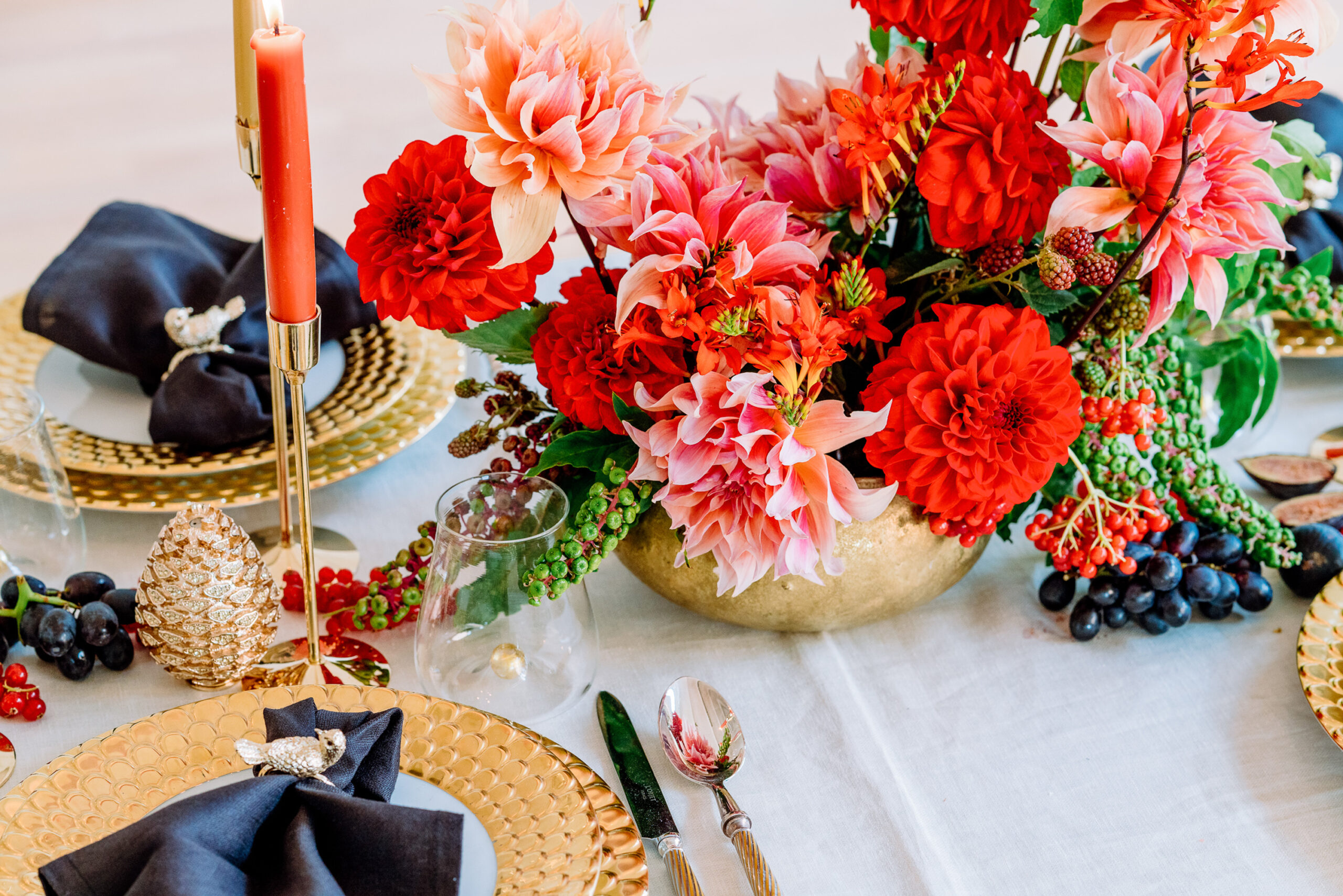How to create a dazzling festive tablescape – with the help of a master florist
An expert from top London florists Blooming Haus offers a step-by-step guide.
For people eager to unearth their creative side at Christmas, master florist Michal Kowalski and his business partner Michael Dariane, of top London florists Blooming Haus, can help you do it.
Kowalski is currently running Christmas masterclasses to help people decorate the house like a professional and create opulent tablescapes and eye-catching festive wreaths – and here he offers a step-by-step guide on how to create a stunning festive tablescape which will wow your guests.
1. Choose your container

Take a bowl, big enough to fit an arrangement of flowers and foliage. Shallow bowls allow for wider arrangements, while taller bowls or vases will be suitable for a more upright style.
2. Secure your frame

Place a kenzan, otherwise known as a flower frog, in the bowl. A kenzan consists of a plate with erected needles which will hold flowers and foliage in place. They are traditionally used in the Japanese art of flower arrangement, ikebana, for fixing the flowers in the container.
“As sustainable florists, we try to work with materials that are environmentally friendly and floral foam is extremely harmful to the environment – it’s full of plastics and doesn’t biodegrade,” he says.
“A kenzan works much in the same way and can be used over and over again.”
Take some chicken wire and scrunch in a ball and place over the kenzan. You will find the chicken wire can be moulded and will hold your flowers in place.
3. Think about foliage

Your arrangement will need foliage to add colour and a base for your floral arrangement. For a winter tablescape use hardy foliage which can be found in the garden, such as magnolia or camellia. They will last longer and will provide the tablescape with contrasting textures. Place the foliage in first, creating different heights.
The idea is to craft a natural staggered arrangement. Don’t be tempted to put too much foliage in, but just enough to break up your flowers. This will also provide an additional support for all your flowers.
4. Combine flowers

Take your chosen flowers (you may have to visit a florist for more choice). Kowalski’s tablescape features dahlias, which are usually finished by the end of autumn but you could also go with hellebores or treat yourself to some roses from a florist. Again, like the foliage, the flowers need to be at different heights.
Start with longer stems and place a couple in the middle and at the front. Always work in groups and place similar flowers together.
5. Vary your heights

Continue placing flowers in varying heights around the bowl. This is your time to experiment. As you add flowers, the arrangement will start to take shape.
“Our main tip is to always place flowers at different levels, place darker flowers towards the lower part of the vessel and lighter flowers towards the upper part,” he recommends.
6. Select different textures

Choose flowers of different textures and shapes, like the roses, to provide additional interest to your arrangement.
7. Fill in gaps

Finally, fill in empty space for a full and opulent festive look.
8. Find inspiration in your garden
“If you want to intersperse your tablescape with flowers from the garden, look to the winter clematis, with its evergreen foliage. It will really add gloss to your arrangement,” he suggests.
“The shrub sarcococca, with its fragrant flowers, is in abundance during the winter months, or our favourite, hellebores, look charming in a winter tablescape.

Hellebores can be used in winter tablescapes
“It may look dainty in appearance, but is quite sturdy and will last, so make use of them. The first to appear in the garden is the Christmas rose, and can appear just before Christmas, hence its name.
“If your roses are coming to an end in the garden, they can easily be picked up at most florists. They work particularly well in winter arrangements and if you’re going for a traditional look, select brilliant red and white roses to harmonise with the festive season.”
Kowalski is holding masterclasses in the run-up to Christmas, advising on the dos and don’ts of purchasing flowers, paying attention to sustainability, before teaching people how to create manageable festive designs which are real showstoppers. Contact Blooming Haus for details.
The Press Association
Latest posts by The Press Association (see all)
- 6 foods that are great for your heart health - April 8, 2025
- Award-winning actors to star in Second World War film released for VE Day - April 8, 2025
- King Charles and Queen Camilla release official 20th wedding anniversary photographs - April 7, 2025
- The 5 ways drinking alcohol can affect your body - April 7, 2025
- Why you should welcome these scary-looking critters into your garden - April 7, 2025




















